When the dog first gets up in the morning, it frequently has eye turds. However, It is not a reason for alarm as long as the volume of the goo remains constant and the dog doesn’t quite exhibit the same throughout the day.
To maintain the dog’s eyes fresh, clear, and moisturized, the tear ducts must generate tears. The tear glands in the innermost areas of the eyes will release copious fluids. The dog may have turds because of the build-up of dirt in the eye lining or interior corners.
Your dog’s eye boogers can also indicate that they are suffering from an allergy or infection. However, dogs experiencing fluid surrounding their eyeballs the whole day are not typical.
What is Vaseline?
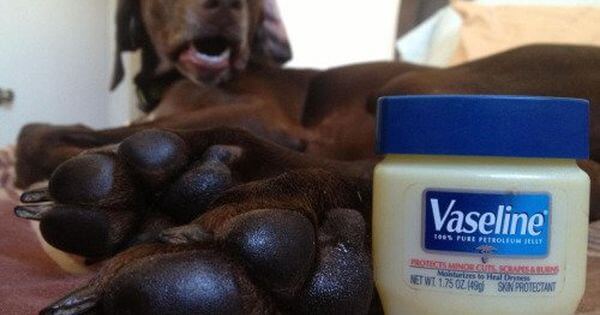
Every home probably has Vaseline. Its hydrating qualities have elevated it to a crucial component of skin care regimens.
Vaseline is another term for Petroleum Jelly. Petroleum, the key element of Vaseline, coats your pores with a waterproof barrier, contributing to its beneficial effects. This promotes skin healing and moisture retention. It works well to maintain skin moisture when recuperating after surgeries. This could be especially beneficial for common, less severe skin lesions.
It is natural for you to question if this handy substance can be administered to your canine companion as well, given its many perks and benefits. So, can Vaseline be used on dogs?
Yes, Vaseline may be used on dogs. However, any lotion or ointment applied to the pup’s skin should be avoided if they enjoy licking. For dogs, petroleum jelly is not poisonous. However, it cannot also be administered to dogs without risk. Vaseline might be helpful for skin problems, but the dog is unaware that it shouldn’t be consumed. If only a small fraction is consumed, the dog might not exhibit any signs. However, if the dog consumes too much, it may experience nausea, sickness, or diarrhea.
Vaseline can be used to soothe the paw pads and rehydrate them. It can also be used to keep their noses from getting dried up. You can also apply a little on their skin if it is dehydrated. Be careful to use a little petroleum jelly when you rub it on the paws. After your pet has completed its stroll, you have washed its pads, and it is almost time for bed, administer the Vaseline.
You may also use rejuvenation lotions with a viscosity similar to Vaseline if your pup’s coat, snout, or toes are rough. But, again, seek out goods that have been given the all-clear for use on animals.
Can Vaseline Be Used for Dog Eye Boogers?
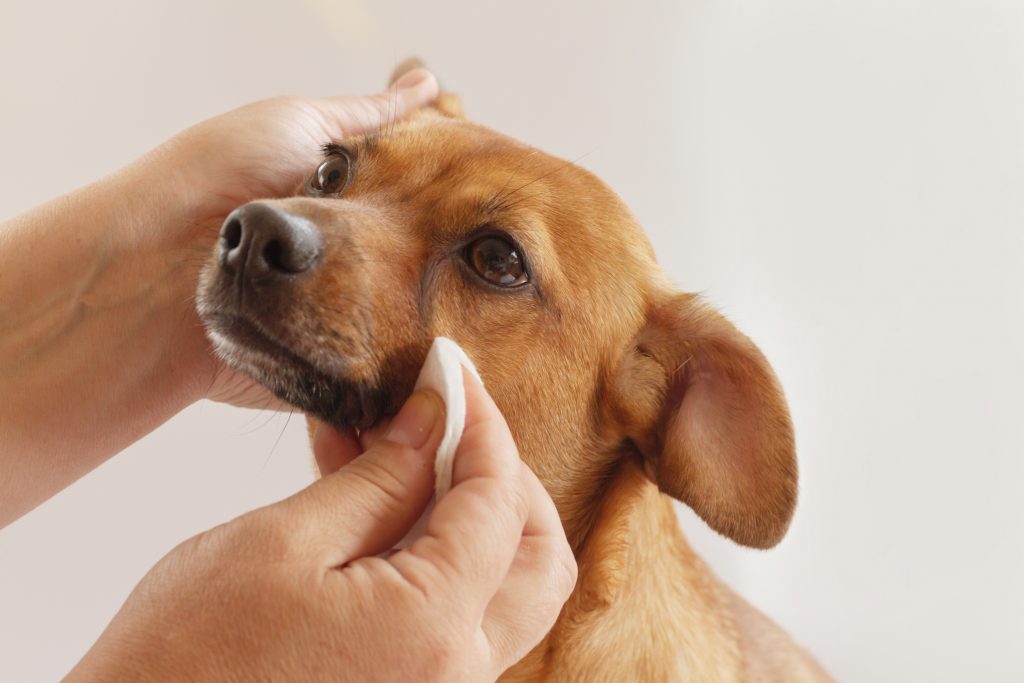
Yes, Vaseline may be used to remove dog eye boogers. Although to remove dog eye turds, Vaseline isn’t necessary. However, your dog might have a little bit of it in the mornings that you can remove utilizing the saline solution.
The veterinarian must look into the source if the condition has become so severe that the pup’s eyes are closed. You require Petroleum jelly to soften the gunk. Nevertheless, Vaseline is not necessary if your dog’s eyes are in good condition.
You can use a small amount of Jelly if the puppy’s eye area is dry. It eliminates the worry of swallowing because it can be challenging for canines to nibble their eyelids.
Also Read: 8 Dog Food Brands To Avoid [+ 5 You Should Buy]
What Do the Eye Boogers in My Dog Indicate?
Dog eye boogers can be a normal occurrence in your canine companion. However, the color, consistency, and amount of secretion can mean many different things. Here are a few conditions dog eye boogers could be warning you about:
1. Goop or crust
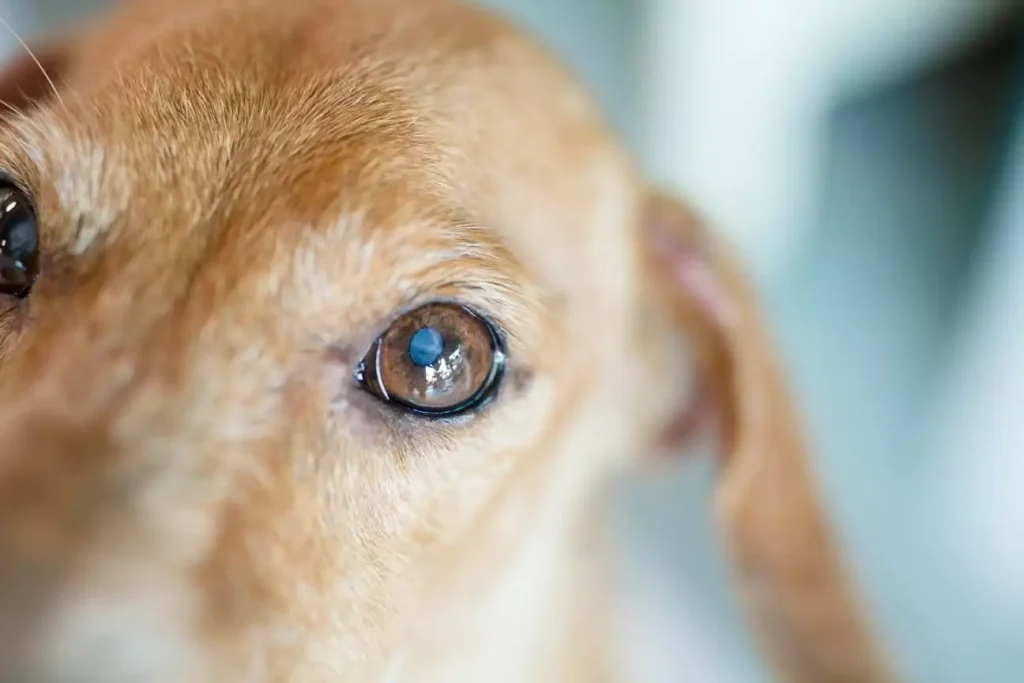
Tears are necessary to guarantee eye health. This is because they nurture and oxygenate the eye’s surface while removing debris from the eye’s layer.
Tears ordinarily discharge via tubules in the inner corners of each eye, but goop and crust can build up from point to point. This substance is typically clear or even a mildly reddish-brown color and is composed of dehydrated tears, mucus, sebum, damaged cells, particles, and other substances.
It is most noticeable in the early hours and is frequently absolutely natural.
2. Runny eyes
Too much eye watering is linked to various problems ranging from fairly benign to severe. For example, your dog may have been exposed to pollen or grime, and the enhanced tearing attempts to alleviate the situation. Schedule a visit with the vet if his eyes insist on continuing to be runny. Similarly, if your dog develops red, sore eyes or any other eye discharge, prefer a vet for a checkup.
Also Read: 7 Best Homemade Dog Food Recipes For Big Dogs
3. Reddish-brown tears
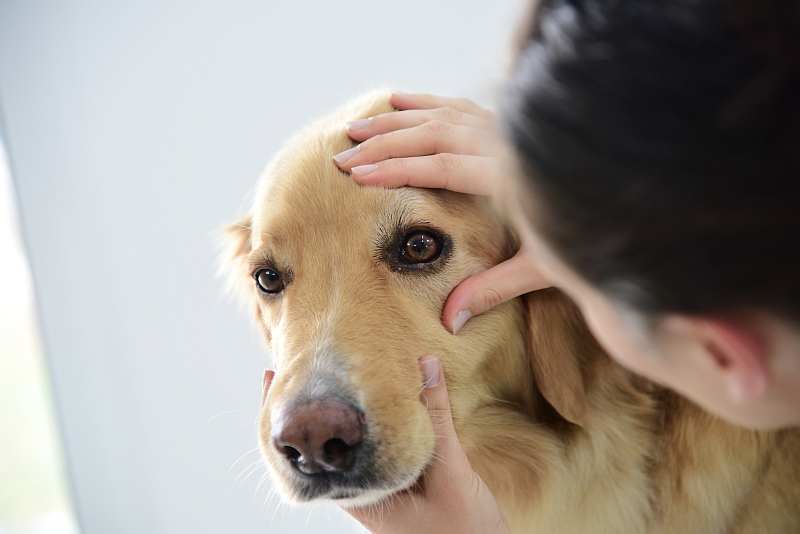
Dogs with lighter-colored fur frequently develop a red darkening around the inner edge of their eyes. This happens because tears harbor a pigment called porphyrin, which keeps turning reddish-brown when exposed to air for an extended period.
Tear discoloration in this region is expected in the apparent lack of other difficulties and is nothing to worry about.
4. White-gray color
Keratoconjunctivitis Sicca is a condition that occurs when the immunologic system of a dog attacks and tries to destroy the glands that generate teary eyes.
When there are fewer tears, the body attempts to make up the difference by producing mucus to moisturize the eyes. However, because mucus cannot start replacing all of the features of tears, the canine’s eyes become red and distressing. Sores and unusual corneal discoloration may be incorporated.
If left untreated, this could cause severe pain and loss of vision.
Set up a meeting with your vet if you notice white-grey secretions accumulating around your dog’s eye sockets.
5. Yellow or Green discharge
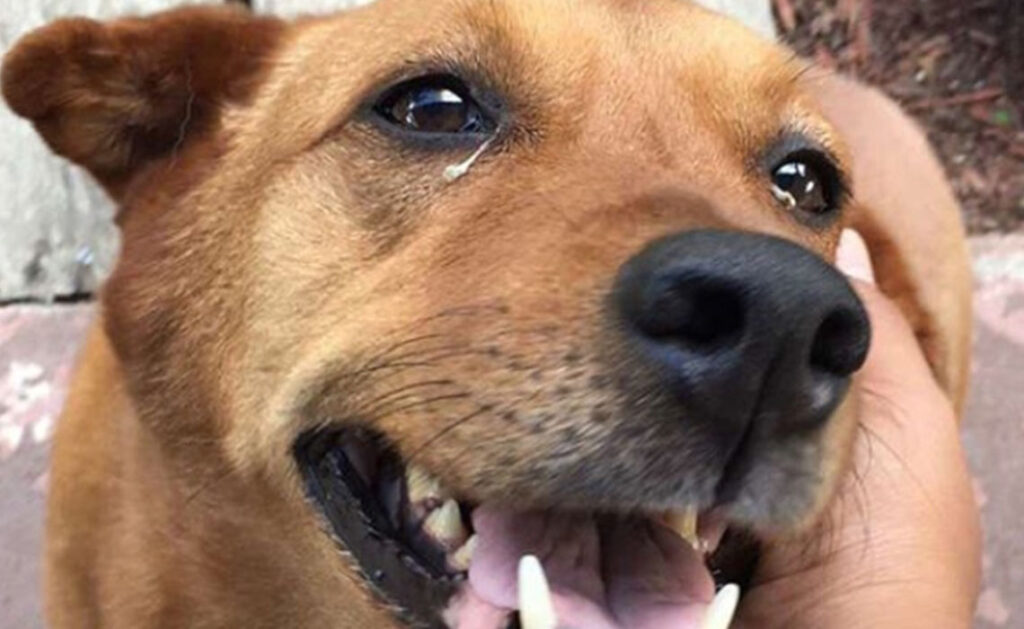
Supdog’s eyes generate yellow or green leakage, and it is likely to have an eye condition, especially if discoloration and irritation are also present.
Eye infections are common as a standalone dilemma or as a consequence of another circumstance (like lacerations, keratitis, etc.) compromising the eye’s natural defenses against infectious disease.
What appears to be an ocular infectious disease often indicates a chronic condition or a problem affecting the lungs, nervous system, or another body component.
Any dog with an ocular infection must be taken to a vet as soon as possible.
What Are the Causes of Dog Eye Boogers?
For some varieties of dogs, watery eyes may seem typical. But it could also signify something wrong with your pet’s well-being. Crumbly or teary eyes in dogs can result from a variety of factors. It can occasionally be a direct consequence of an eye problem, like inflammation or a foreign substance, as you may assume.
The types of eye secretion you notice can assist the veterinarian in identifying the disease’s etiology. An allergen may be present if the dog seems to have a transparent, runny eye secretion. The dog’s pupils may become irritated by dust and otherwise pollen. The dog may have a white secretion if it has Keratoconjunctivitis. The tear glands are not working as they should in this circumstance. As a result, the eyes may become scratchy and improperly cleansed. The puppy’s eye turds could be a sign of a microbial illness if you notice that they have begun getting green or yellow.
You can think about getting and utilizing one of the canine-specific cleansers made to get away from those eye turds to rinse the unsightly pieces away. But, again, carefully read the packaging and follow its directions.
As an alternative, some veterinarians advise using a solution of both salt and water.
Resist utilizing cotton buds or even your fingers. It will help if you exercise caution when cleaning around the eye, as it is a delicate area. Regardless of whether a cotton bud can deliver perfection, you risk unintentionally stabbing the dog inside the eyes. Additionally, if your hands are dirty, this could result in a readily preventable illness.
Do Read About: Is Food Coloring Safe For Dogs? – Should I Worry?
How to Keep Your Dog’s Eyes Clean?
The eyes of your dog must be properly moisturized. Pet-friendly eye cleansers can moisturize the dog’s pupils while clearing out any allergens if there is a problem with the production of tears.
Try cutting the dog’s facial hair. Tresses may aggravate eye irritation and contribute to the build-up of dirt. You may request the groomer to clip the hair around their eyes during the next session or do it yourself at home.
Where Else You Can Use Vaseline on Dog?
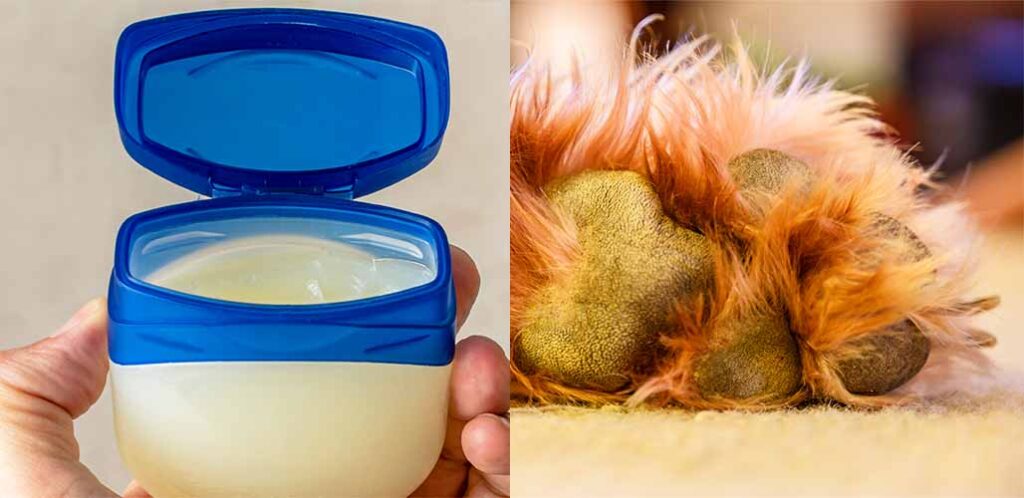
So, now that you have got an idea how to use vaseline for eye boogers and other eye-related issues, you must have surely come across the question of where else you can use vaseline on dogs.
As discussed earlier, vaseline isn’t harmful to dogs if consumed in very fewer quantities through their licking habit. Hence, there are areas where you can apply it on your pet’s skin and don’t have to worry about it even if they lick it. You can apply the vaseline in just the smaller amount you want to get hydrated. Check below.
1. Paws
The paws of your pet come in direct contact with lots of rough surfaces both inside and outside, thus, making their paws sometimes dry and, at other times, may get injured. If left for a prolonged period with the application of any moisturizer or getting them cleaned, the upper surfaces of your dog’s paws may come out as peeling off.
So, adequate vaseline application may help prevent that roughness and heal the minor bruises and injuries they come across. Don’t worry about their licking habit, though. You can apply vaseline whenever you think it has dried up.
2. Nose
The area at the nose, for the majority of dog breeds, does not have furs. This open surface, therefore, is exposed to a lot of weather elements. Sometimes, due to changes in weather or other health conditions, it becomes dry or comes off as dry skin flakes which may cause irritations. To prevent this condition, you should apply some vaseline or any other moisturizing lotion. It will offer your dog much-needed comfort. Note that vaseline is best as it heals bruises.
3. Skin
If you can apply vaseline on your dog’s nose and paws, there is no harm in it to apply the same on your dog’s skin. You can apply vaseline anywhere else on your dog’s skin. Remember, vaseline is suitable if your dog has minor injuries and cuts.
However, suppose your dog has developed a major skin disease or an incurable wound; then it is always recommended to consult your vet. The vet will prescribe the required topical medicine depending on the severity of the skin condition.
Final Words
Vaseline is a petroleum-based substance with no adverse effects on canines. In dogs, eye turds are a regular phenomenon. They could be cleansed successfully with a pet-friendly solvent. Vaseline is a typical household cure that might provide comfort for your dog if applied correctly to its feet or nose. Veterinarians do not, however, advise using petroleum jelly every day to treat dog eye boogers. Nevertheless, it helps keep your pet’s coat and paws hydrated. Instead, use a tiny amount of Vaseline on your canine companion, rub the affected region to let the substance soak, and don’t let the dog lick it all off.
Meet Fabian Wright, our guide into the animal realm at PetLoversArena.com. Having served as an Animal Care Specialist for the Ruwenzori Team at the Kansas City Zoo, he prioritizes conserving exotic species by replicating their habitats. Fabian aspires to share captivating stories of creatures, big and small, through PetLoversArena.com.

